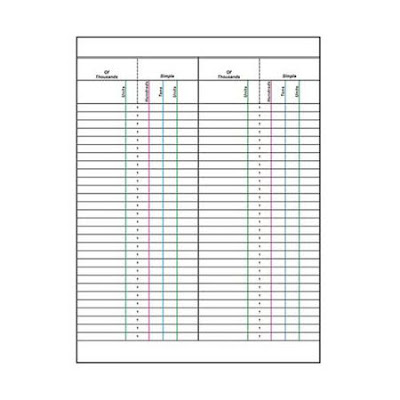The
early years of a child's education form the foundation for lifelong learning.
During this crucial stage, children benefit most from an environment that
supports independence, sensory exploration, and purposeful engagement.
Educators and parents alike are increasingly turning toward educational
approaches that prioritize a child’s natural curiosity, problem-solving skills,
and cognitive growth.
Why Choose Montessori Classroom Materials for Holistic
Development
In
Montessori education, the environment is seen as the "third teacher"
— designed to be orderly, accessible, and rich with learning opportunities. Kid
Advance Montessori Classroom Materials play a pivotal role in this
setting. Each item is carefully developed to match specific learning outcomes,
such as language, mathematics, sensorial skills, and practical life activities.
These
materials aren't flashy or overly stimulating. Instead, they are elegant in
simplicity, allowing children to focus deeply on a single task without
distraction. For example, the Pink Tower teaches size differentiation,
sequencing, and motor skills — all through self-directed play. The materials
guide children to discover answers independently, building confidence and a
sense of accomplishment.
Learning through Purposeful Play
Traditional
education often leans heavily on instruction and correction. In contrast,
Montessori-based learning emphasizes discovery. The tools and materials
provided are self-correcting, meaning children can identify and solve mistakes
on their own without adult intervention. This approach not only enhances
problem-solving skills but also promotes internal motivation.
Montessori
learning materials also cater to the sensitive periods in early childhood
development — those phases when a child is particularly receptive to acquiring
certain skills. For instance, during the language-sensitive period, movable
alphabets and sandpaper letters help children connect sounds with symbols in a
tactile and memorable way.
Designing a Montessori-Inspired Learning Space
Creating
an effective Montessori environment doesn’t require a huge budget, but it does
demand intention. Materials should be displayed at the child’s height, sorted
by category, and rotated occasionally to maintain interest. Each material
should have a specific purpose and be accessible for independent use.
Shelving
should be open and uncluttered. Labels can be included for older children to
promote early reading. Most importantly, the learning space should be calm and
structured, giving children the freedom to choose materials while maintaining
an overall sense of order and respect for the space.
How Montessori Materials Support Key Learning Areas
Montessori
classroom tools are designed to address five core areas:
1. Practical Life – Pouring, tying, buttoning, and
cleaning activities develop fine motor skills and self-care habits.
2. Sensorial – Materials like sound boxes and
color tablets refine the senses and introduce concepts like comparison and
classification.
3. Mathematics – Golden beads and number rods help
children visualize math concepts like quantity and value.
4. Language – Tools such as movable alphabets and phonetic objects lay
the foundation for reading and writing.
5. Cultural Studies – Maps, puzzles, and nature-based
materials introduce geography, science, and cultural awareness.
These
materials aren't meant to be used just once. Repetition and mastery are key
components of Montessori education. A child might spend weeks engaging with a
single activity, deepening understanding through exploration rather than
rushing toward a result.
Benefits beyond the Classroom
The
use of Montessori materials often results in improvements beyond academic
achievement. Children learn responsibility, concentration, patience, and
independence — qualities that serve them well in every stage of life. The
freedom to choose, combined with the structure provided by the environment,
creates a balanced learning journey.
Parents
who bring this model into their home often notice an increase in their child's
confidence, curiosity, and respect for order. Even in small living spaces,
incorporating a few core Montessori materials can support a child’s learning
path significantly.
Frequently Asked Questions (FAQs)
Q1:
What age group benefits most from Montessori classroom materials?
Montessori materials are most commonly used for children between 2 and 6 years
old, but there are age-appropriate extensions for older children as well. Each
tool is designed to meet specific developmental needs relevant to different age
stages.
Q2:
Do I need to be trained to use Montessori materials with my child?
While formal Montessori training is beneficial for educators, many materials
come with clear instructions and can be used effectively by parents with basic
guidance. Online resources, videos, and manuals are widely available to help
you use them at home.
Q3:
Can these materials be used in traditional classrooms?
Absolutely. Many traditional classrooms incorporate Montessori elements to
supplement their teaching methods. The materials can be a valuable asset for
hands-on learning, especially in early childhood settings.
Q4:
Are Montessori classroom materials expensive?
While some authentic materials can be costly, many affordable and even DIY
options exist. The quality and durability of these tools often justify the cost
over time, as they’re meant to be used repeatedly and passed down.
Q5:
How do I know which materials to choose?
Start with core areas such as practical life or sensorial learning, depending
on your child's interests and developmental stage. Observing your child closely
will help guide the selection of appropriate materials that support their
growth.
By
integrating Montessori Classroom
Materials into learning environments, whether at school or home, parents
and educators are making a conscious investment in a child’s independence,
focus, and long-term success. These thoughtfully crafted tools go far beyond
teaching letters or numbers — they inspire a lifelong love for learning.








No comments:
Post a Comment